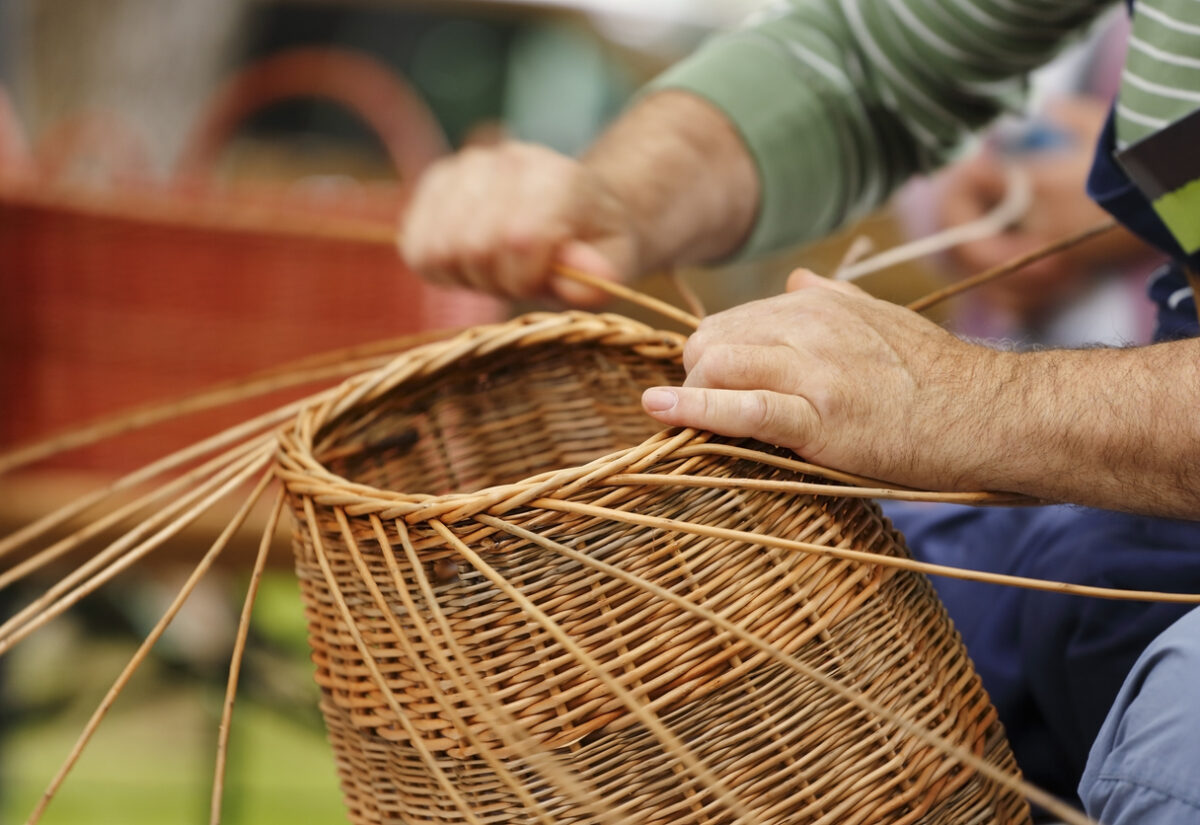 Getty Images/iStockphoto
Getty Images/iStockphotoBritain has a long, proud history of craftsmanship, from intricate leatherwork to thatched roofs and hand-thrown ceramics. Sadly, many of these traditional skills are fading fast. As industrial production, digital tech, and mass imports take over, some crafts that once defined entire communities are now kept alive by just a handful of people. The Heritage Crafts Association maintains a Red List of endangered and critically endangered crafts in the UK, and it paints a stark picture of what’s being lost. These are some of the oldest traditional British crafts that are hanging by a thread, and why they matter.
1. Wheelwrighting
A craft that dates back thousands of years, wheelwrighting involves making and repairing wooden wheels for carts and wagons. While once a staple of rural and industrial Britain, it’s now a niche skill, with only a small number of trained wheelwrights remaining.
Wooden wheels are still needed for heritage vehicles, steam rallies, and historic estates, but there’s little demand outside that. The craft takes years to master, and training opportunities are limited. According to the Heritage Crafts Red List, wheelwrighting is now classified as “critically endangered.”
2. Corn dolly making
Corn dollies—woven straw figures once used in harvest rituals—were believed to hold the spirit of the crop and ensure next year’s success. These symbolic decorations were common across the British countryside well into the 20th century.
While some artists and folk enthusiasts still practise the craft, corn dolly making has become rare. As traditional farming methods and seasonal rituals disappear, so too does this symbolic and culturally rich art form. The Straw Craftsmen website documents some of the traditional patterns still in use.
3. Hat block making
Milliners still rely on wooden hat blocks, which are moulds used to shape felt or straw hats. However, the skill of making those blocks is now incredibly rare. British hat block makers once supplied the global fashion industry; now, just a few remain. Each block is carved by hand to specific sizes and shapes, often custom-made for designers. With the decline in hat-wearing and cheaper, mass-produced alternatives, demand has dwindled, threatening the survival of this precision woodcraft.
4. Hand-made paper making
Before industrial processes took over, handmade paper was a booming craft in Britain. Today, only a handful of makers are still producing it using traditional methods—by lifting pulp onto screens, pressing it, and drying it sheet by sheet. Handmade paper is still valued for fine stationery, bookbinding, and restoration projects, but most commercial needs are now filled by machine-made paper. The remaining makers, like Two Rivers Paper, are keeping the tradition alive—just.
5. Scissor making
Sheffield was once world-renowned for its scissor and cutlery production. While the city still has a few historic manufacturers, like Ernest Wright, the number of traditional scissor makers has plummeted. Hand-forged scissors involve dozens of processes, from forging and grinding to fitting and polishing. These skills take years to learn and have been largely replaced by mass production. The few remaining artisans are vital for preserving Sheffield’s legacy.
6. Flint knapping
Used for thousands of years to shape tools, weapons, and later, building materials, flint knapping remains essential for maintaining historic buildings. It’s especially important in regions like East Anglia and the South Downs, where flint is common in church walls and heritage sites. However, skilled flint knappers are becoming scarce, with most work now done by a very small number of people. The risk is that important restoration work will become more difficult, or less authentic, without them.
7. Ornamental glass engraving
Glass engraving, particularly by hand using wheels or diamond-tipped tools, is a delicate, highly skilled craft. It’s been used to decorate everything from drinking glasses to church windows and commemorative gifts. Now, only a few artists continue this tradition, and training opportunities are limited. The British Glass Biennale helps to spotlight some of this work, but it’s an uphill battle to keep the skills alive.
8. Tanning with oak bark
Long before chemical processes took over, oak bark tanning was the standard method for producing high-quality leather. It’s a slow, natural technique using tannins extracted from tree bark—and it creates a beautiful, durable finish. These days, only one tannery in Britain—J. & F.J. Baker in Devon—still uses this method commercially. Their leather is prized around the world, but it’s a solitary outpost of a once-thriving industry.
9. Spindle turning (pole lathe)
Pole lathe turning is a green woodworking technique that uses a foot-powered lathe and fresh-cut timber. It’s one of the oldest methods of shaping wood and was once a common skill for producing furniture parts, bowls, and tool handles. Now, it’s mostly the preserve of historical re-enactors and craft demonstrators. Organisations like The Association of Pole Lathe Turners are trying to keep the knowledge alive, but very few people practise it commercially.
10. Block printing on textiles
Before screen printing and digital design, patterns were applied to fabrics by hand-carved wooden blocks. British block printers were once sought after for their intricate floral and geometric designs, many of which inspired the Arts and Crafts movement.
While some textile artists still use block printing for small-batch or artisanal production, the commercial industry has all but vanished. Maintaining the carving skills and techniques requires dedication, and there are only a few experts left who can teach it.
11. Coachbuilding (carriage making)
Coachbuilding once employed thousands across Britain, constructing elegant wooden carriages for both utility and luxury. The craft evolved into early car bodywork before being overtaken by industrial steel and automation. Today, coachbuilding survives primarily for historic restorations and museums. It’s a blend of carpentry, metalwork, and upholstery—an incredibly demanding craft with dwindling practitioners. Schools and apprenticeships are rare, making it hard to pass on.
12. Rush and willow basket making
Basketry was once a vital part of daily life—used for everything from fishing traps to market baskets and furniture. Britain has a long tradition of basket making using local materials like rush, willow, and hazel. Today, traditional basketmakers are hard to find. The market has been swamped by imported, mass-produced versions, and the knowledge of how to harvest and prepare native materials is fading. The Basketmakers’ Association is one of the few organisations actively promoting the craft.
The importance of British craft
These endangered crafts aren’t just quaint hobbies or museum pieces—they’re part of Britain’s cultural and industrial heritage. Each one carries generations of knowledge, skill, and local identity. Once lost, they’re incredibly hard to bring back.
Supporting traditional makers, encouraging apprenticeships, and raising public awareness are key to keeping these skills alive. Whether it’s buying hand-forged scissors, attending a basketry course, or simply spreading the word, every small act helps preserve a craft that might otherwise disappear forever.



